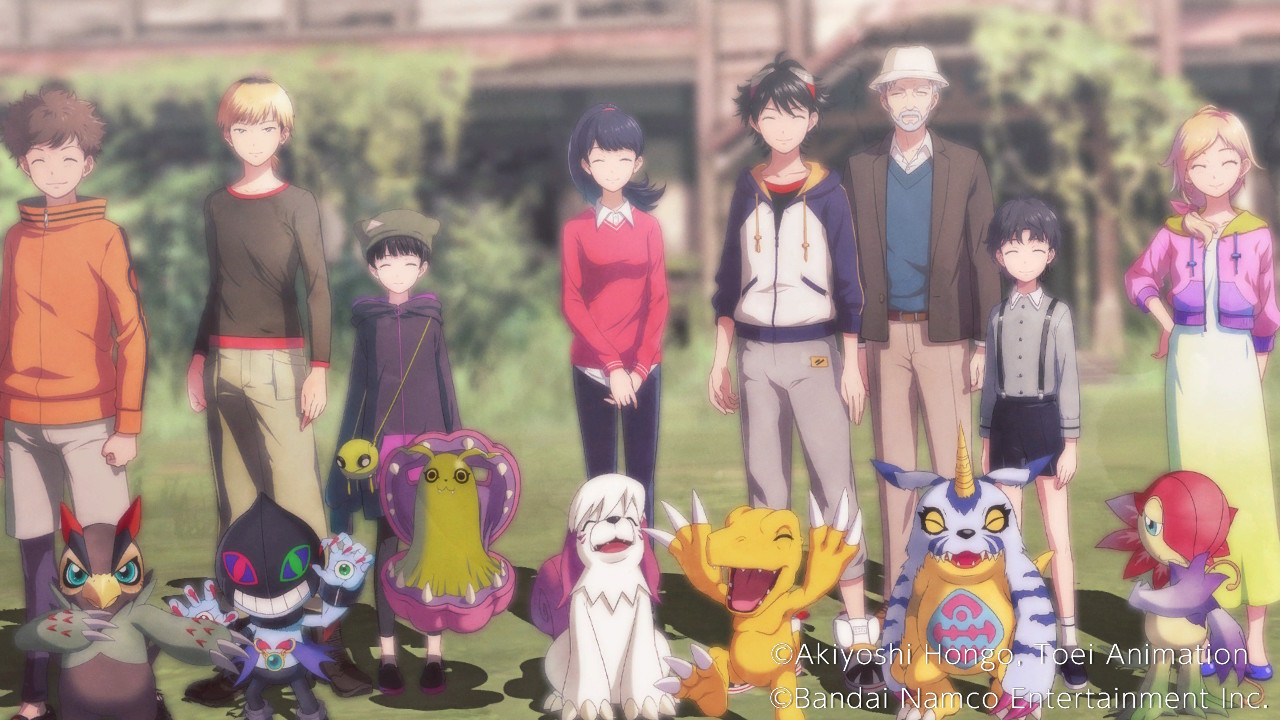Digimon Survive
30 August, 2022
This post will and must contain heavy spoilers for Digimon Survive. Reader discretion is advised.
Digimon Adventure, as its first TV anime, has cast an immensely long shadow over the rest of the Digimon franchise, with a direct sequel, a remake, seven movies, and a full game adaptation, and inspiring bits and pieces of and cameos in nearly every piece of digimon media to postdate it. From the moment the game begins, with eight children at summer camp encountering an unseasonal snowstorm and brought into a world of digimon, Digimon Survive is very much a work in dialogue with its predecessor.

It makes frequent nods to Adventure and occasional ones to Digimon Adventure 02 - a Gazimon who doesn’t know what to do when its boss is defeated, for instance, or Chibimon selected as the digimon partner for a “next generation” in one epilogue.

This is not, however, a bad thing. Both because Adventure is a lengthy story with significant depth, and Survive tends to cover different aspects of it than other digimon media… and because any anime with so much influence on what comes after is beloved for good reason.
Digimon Adventure is, among many other things, a story about children stranded in a dangerous world – a fact which can be overlooked in retrospect, because the violence of the antagonists falls on various digimon who helped them out, and all eight children survive. But there is a touching scene in episode 43 of Mimi building graves of those friends who did not make it – and the toughest losses, at this point in the story, are still to come.
_[2E08E29E].mkv_snapshot_02.54.613.jpg)
Perhaps a lack of powerful, non-partner companions is why the events of Digimon Survive go so wrong for the children (it is hard to think of them as “chosen” for anything, except perhaps to be sacrificed) themselves, but it is also true that they encounter a very different digital world – not an immense world of wonder, with a continent to explore once they leave the initial island, but a small number of real-world structures surrounded by a deadly fog. The structures are linked to the real world, with natural disasters striking many of the real world counterparts of the places they saw in the digital world, and the sudden appearance of a library in the digital world around the climax of the story.
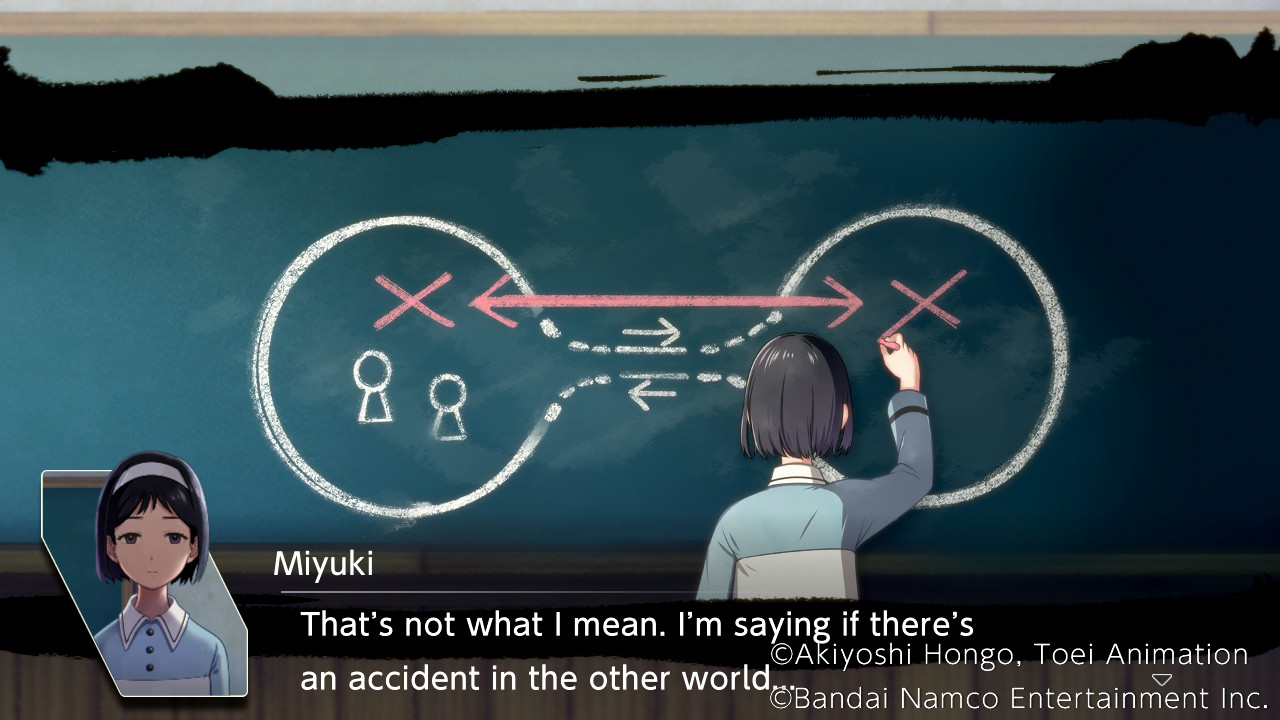
As Adventure is a 1999 work, and Survive a 2022 one, this works as an immensely sad metaphor for what’s happened to the internet since my childhood. But Survive’s world of monsters – consistently referred to as ‘Kemonogami’ or beast gods in the text, despite the odd nod to the word digimon in the end game – is not truly a digital one.

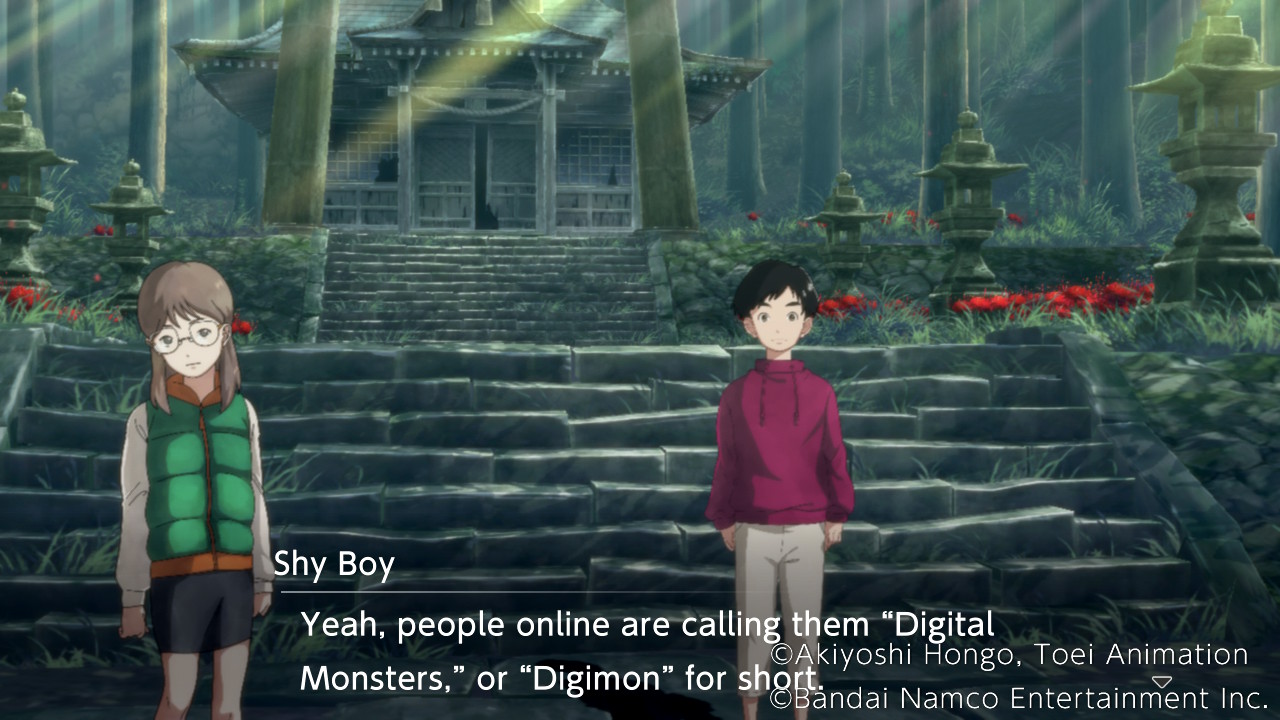 Digimon as a franchise has spanned the gamut from hard science fiction about Artificial Intelligence (ala Digimon Universe Applimonsters, complete with a character named for Ray Kurzweil) to techno-fantasy which treats computer science and programming as a source of magic; Adventure leans towards the latter. Survive takes it a step further, treating digimon as something like youkai with no necessary connection to computers at all, save perhaps in being seen through a mysteriously perpetually charged smartphone.
Digimon as a franchise has spanned the gamut from hard science fiction about Artificial Intelligence (ala Digimon Universe Applimonsters, complete with a character named for Ray Kurzweil) to techno-fantasy which treats computer science and programming as a source of magic; Adventure leans towards the latter. Survive takes it a step further, treating digimon as something like youkai with no necessary connection to computers at all, save perhaps in being seen through a mysteriously perpetually charged smartphone.
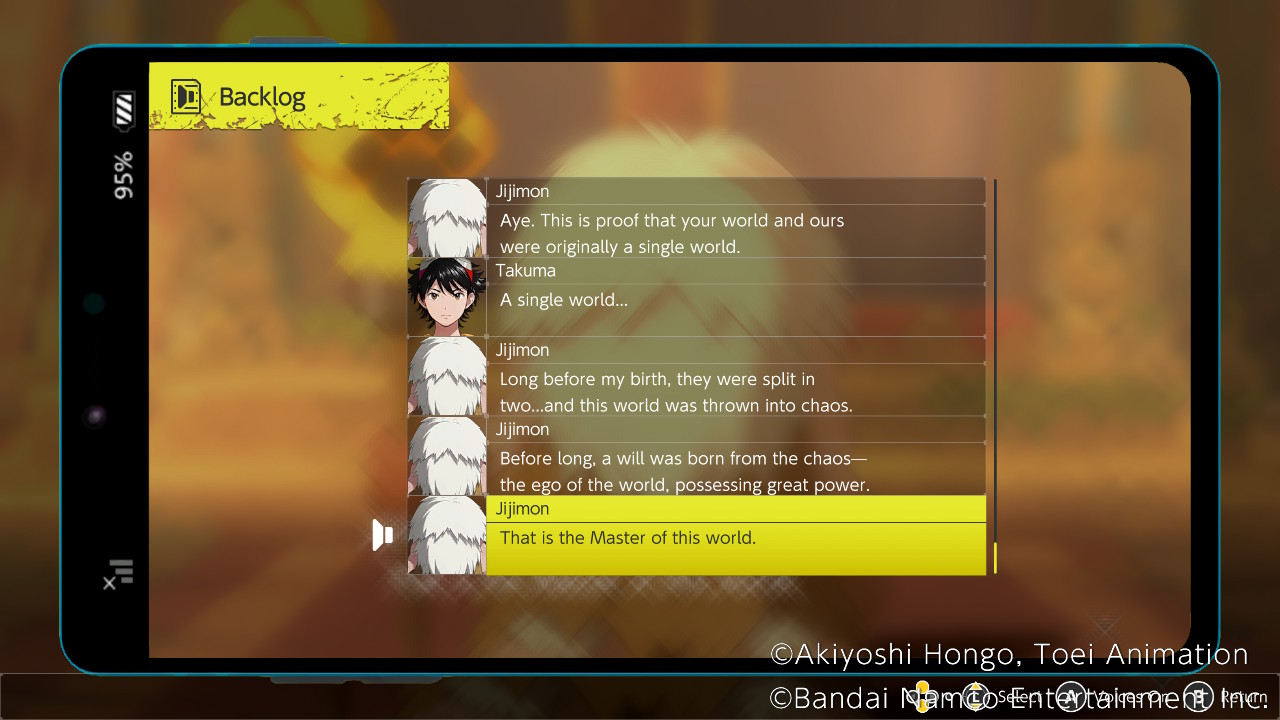
For further reading on that aspect, the first question of this producer interview will do nicely.
Pushing digimon deep into the past, long before ENIAC and the earliest computers, is not unique to Survive; many digimon designs have obvious mythological antecedents. Episode 35 of Digimon Ghost Game similarly links a digimon – in this case Manticoremon, who does not appear in Survive - with ancient customs of human sacrifice. Also of relevance is the 33rd episode of Digimon Adventure 02, where the legend of the four beast gods is elaborated on, in this case in association with Kyoto or originally Heian-kyo, Japan’s longtime capital.
In Digimon Survive, the gods are instead associated with the Kamakura period – an era best remembered as the time when Japan faced down the Mongol fleets of Kublai Khan, but which, ironically, was also the period in which Kyoto lost its centuries-old status as sole capital of the country. The four (or five) gods – known in a digimon context as Holy Beasts – feature in Digimon Adventure 02, Digimon Tamers, and a large number of other anime drawing on the same legends, most dramatically in Fushigi Yuugi.
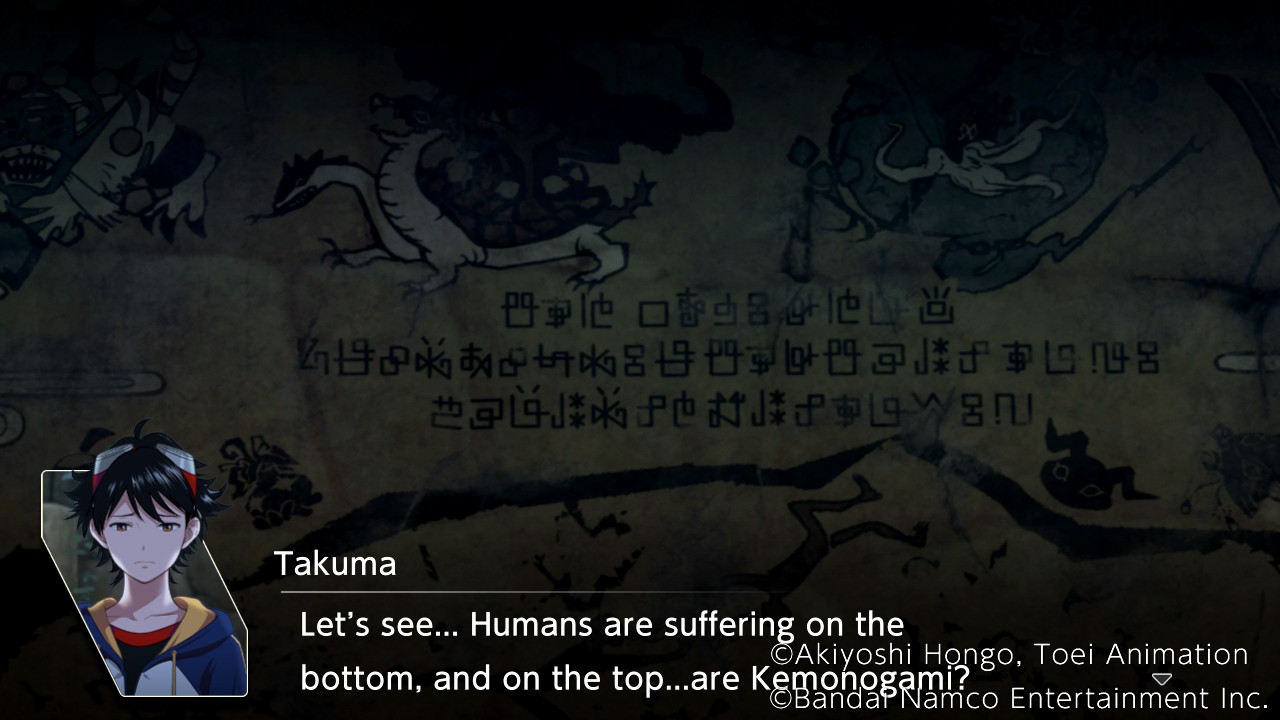
%20[F7211B4E].avi_snapshot_15.15.662.jpg)
Survive is not the only piece of digimon media to associate the Holy Beasts with an earlier group of chosen children; the predecessors of the Adventure cast used them as partners to fight Apocalymon, as we learn in Digimon Adventure tri. And Haruchika, like Maki, faces a very unfortunate fate as a result of his partnership, and proves the major obstacle of his successors. Seeing his story, one is reminded of her lament: “Why were only some of us chosen?” although in her case, it is the partner, not the child, who is the sacrifice. And in his, we get a spin on the common JRPG trope of fighting god, and a final boss who gives an altered quote from the chorus of Adventure's legendary opening theme, Butter-Fly
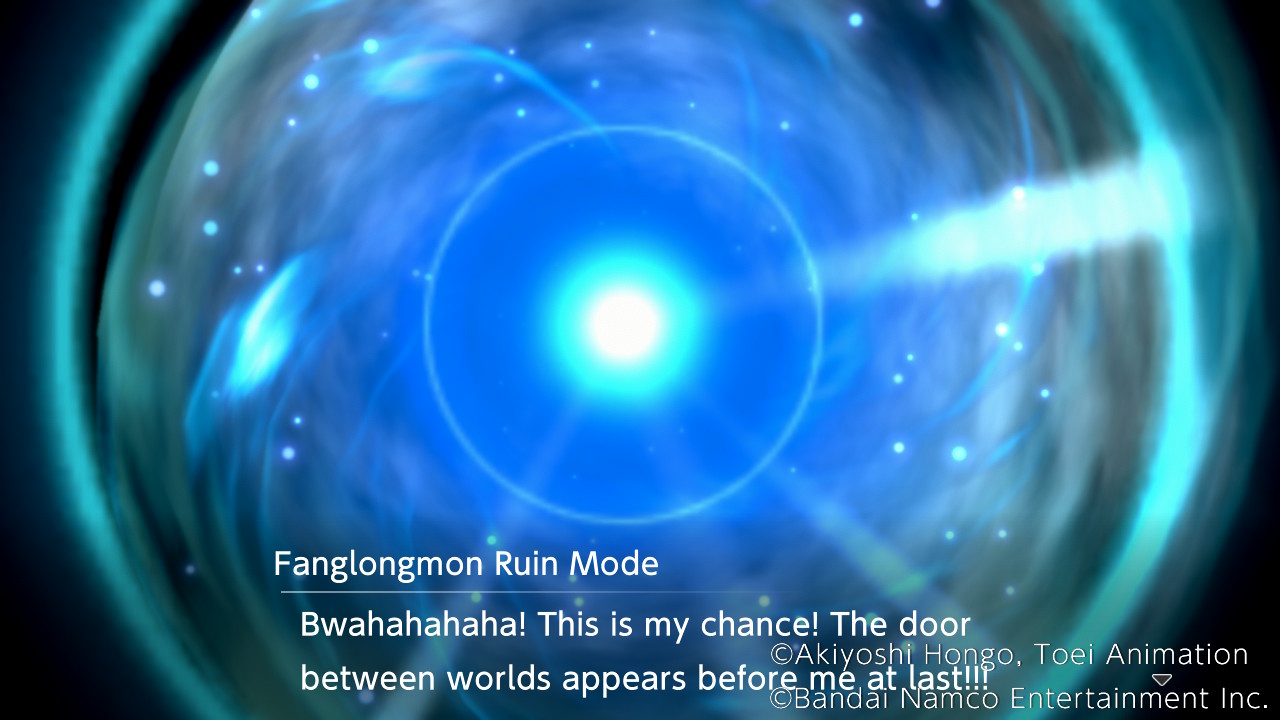

One also finds many parallels between the Survive and Adventure casts themselves, along just their predecessors.

Momozuka Takuma is the player character, and as such, with dialogue options, he can sometimes differ a great deal in practice from your typical gogglehead – at best, it is possible to play him like Yagami Taichi. He does, however, also have an Agumon partner which (unlike Masaru’s) shares a potential evolution line with Taichi’s (voiced wonderfully in all three evolution lines by Sakamoto Chika, who also voiced his Adventure counterpart).

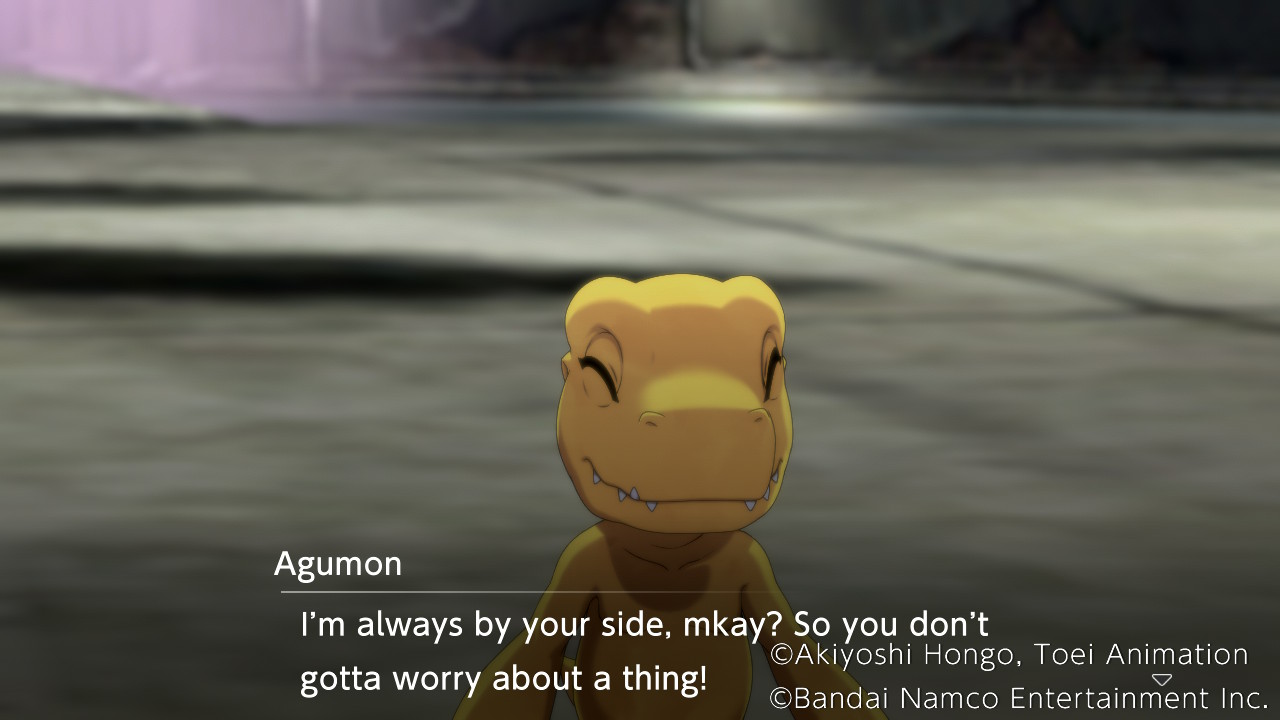
Takuma also slowly comes into the role as a leader throughout the game, much like Taichi, who is formally given that position at the exact midpoint of the anime, and unlike many succeeding goggleheads, who take a dominant role among the group from day 1.
A blond tsundere boy with a wolf for an adult-level digimon partner and a complex over protecting his younger sibling, it is easy to see Ishida Yamato in Shinomone Kaito. The two are not identical, and Kaito begins the story with considerably more distance from the main cast, being not a camper but someone who lives in the area of the shrine – then again, the 2020 remake Digimon Adventure: did something similar with Yamato. Both characters’ self-identities are bound up in protecting their younger sibling, and both perceive them (as we learn in Kaito’s first interaction with the group) as considerably less independent than they actually are. In Kaito’s case, it seems if anything more severe, likely because of a stalking incident with Miu that seems to have shaken him more than it did the actual victim; or perhaps because he has less else going on. What was one aspect of Yamato’s personality seems at times to be Kaito’s entire character.

Coming face to face with Takeru’s independence, along with a bit of manipulation by Jureimon, was briefly enough to turn Yamato against the group; were he to lose Takeru entirely, perhaps he, too, could have been driven to the extremes of Kaito in the Harmony route. It would be interesting to see a MetalGarurumon and Pinnochimon jogress, but I doubt the digital world would survive such a thing.
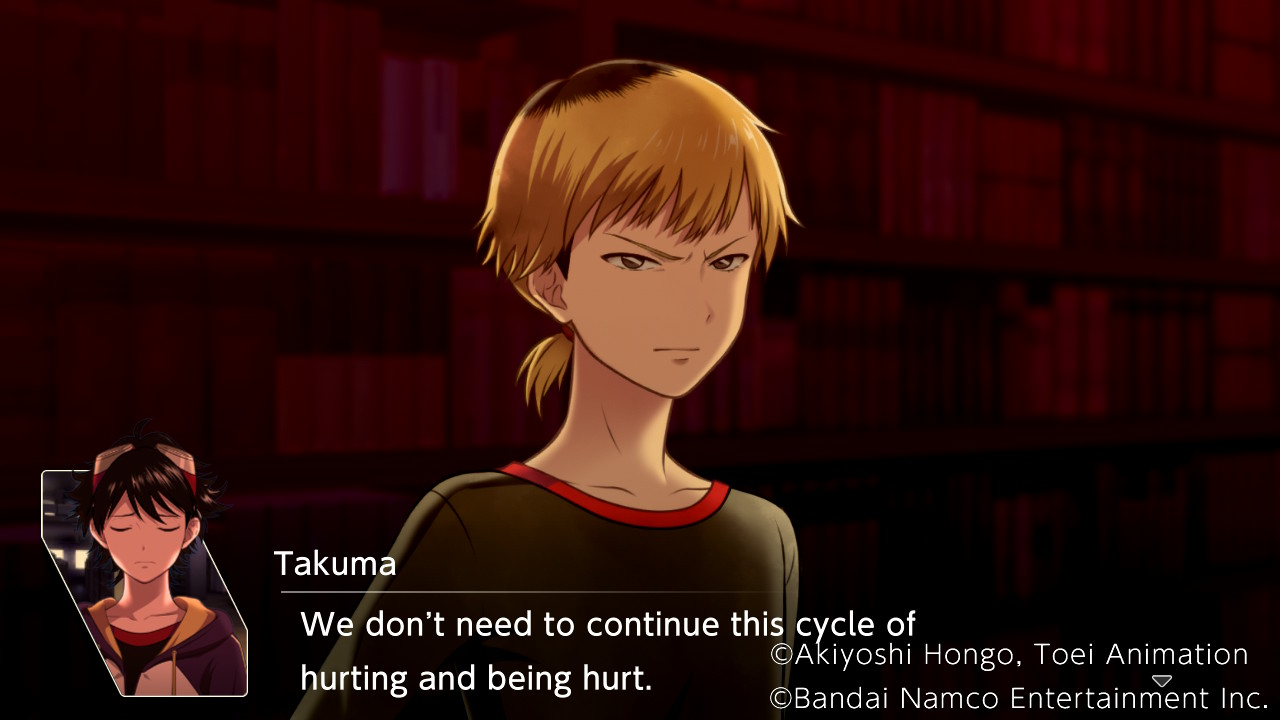
Shibuya Aoi is not exactly Takenouchi Sora, and Labramon shows little resemblance to Piyomon – but both step easily into the ‘group mom’ role, constantly worrying about the others. Aoi is capable of holding the group together when Takuma briefly returns to Earth, but the party’s older age and considerably more dire circumstances must play a role; there was simply nowhere to wander to.
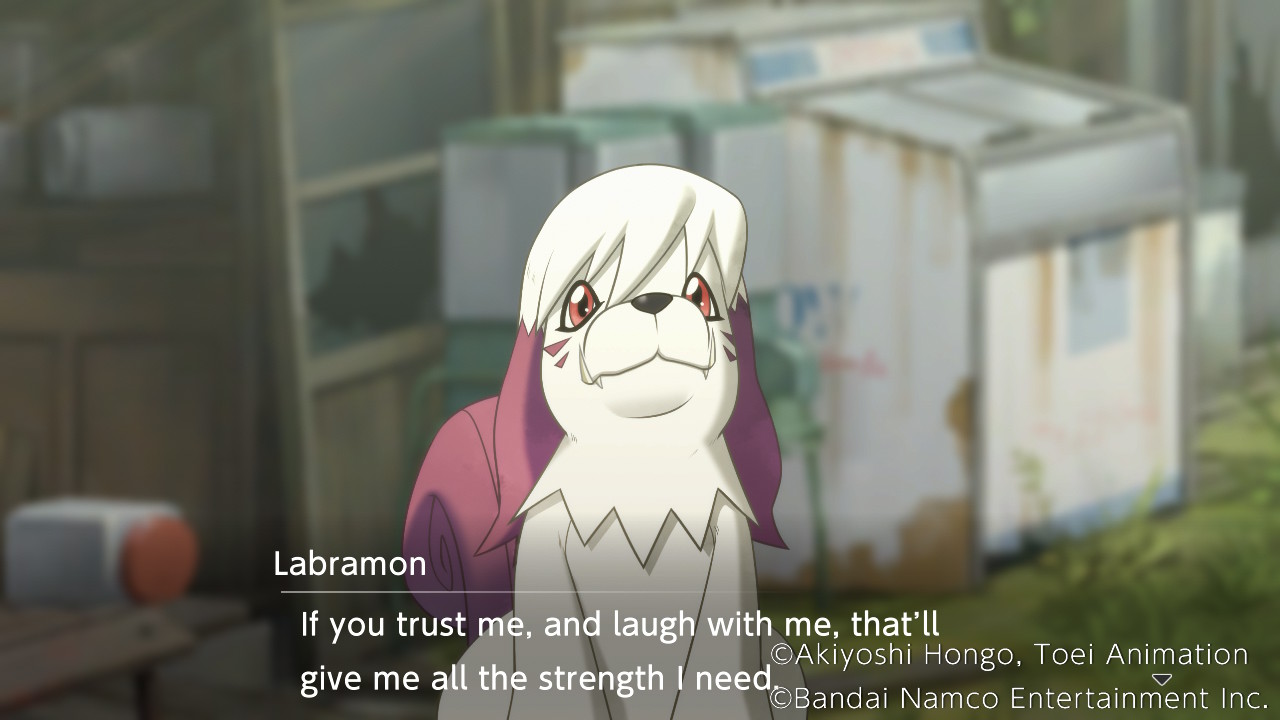
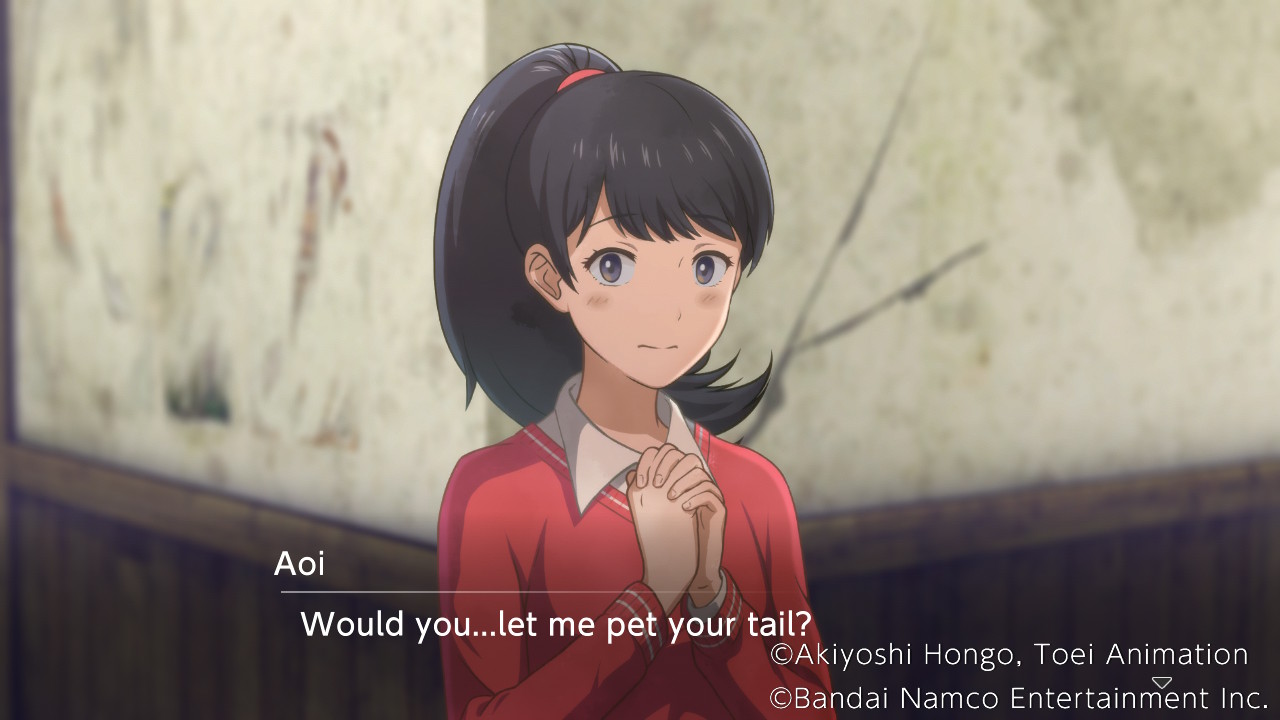
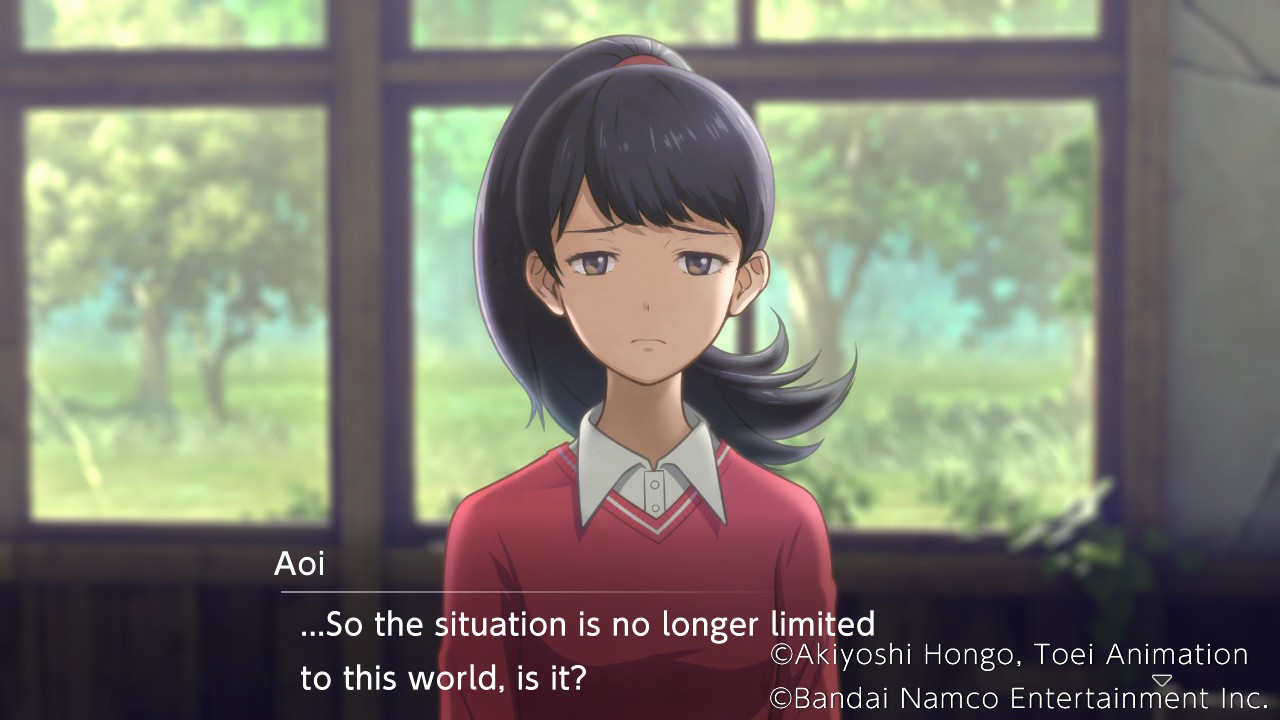
Aoi, however, is not the tomboy that Sora is, and issues with a traditional family do not figure in her story; as an often overworked class representative, she if anything has an even greater sense of responsibility than her counterpart. It is hard to imagine Sora’s compassion going wrong in the specific way that brings us Plutomon on the Wrathful route (if anything, that seems more suited to her mother Toshiko) but one should note, as many an overbearing parent or rebellious child has learned the hard way, that the line between protection, compassion, and simple domination can be far fuzzier than we would like. And if a wounded Ogremon had tried to kill Mimi as Piemon did Aoi – in a scene with close parallels to episode 46, up until the stabbing - I shudder to imagine the latter’s reaction.
Hinata Minoru has no real counterpart among the chosen children of Digimon Adventure. He is a boy who admires stories of heroes but finds himself overwhelmed by fear when forced by circumstance to become one, and often uses comedy to lighten the mood and overcome his fear. He is also the sole member of the cast, apart from the protagonist, to survive the story regardless of route. His partner Falcomon, however, shares a great deal of personality with Hawkmon from 02, both of them proud, chivalrous avian digimon.- but Minoru is not at all like Miyako, and events go very wrong in a way with no 02 parallel. Humans and digimon being in tension is a long-running theme of the franchise, and Survive reaches a peak not seen in either Digimon Savers or in tri., so I can not really think of anything like the fight between Minoru and Falcomon in chapter 6 (or, admittedly, the circumstances precipitating it – although I still found myself frustrated with both sides) – but in the end, their bond shines through, and we get a touching moment of character development for both of them.
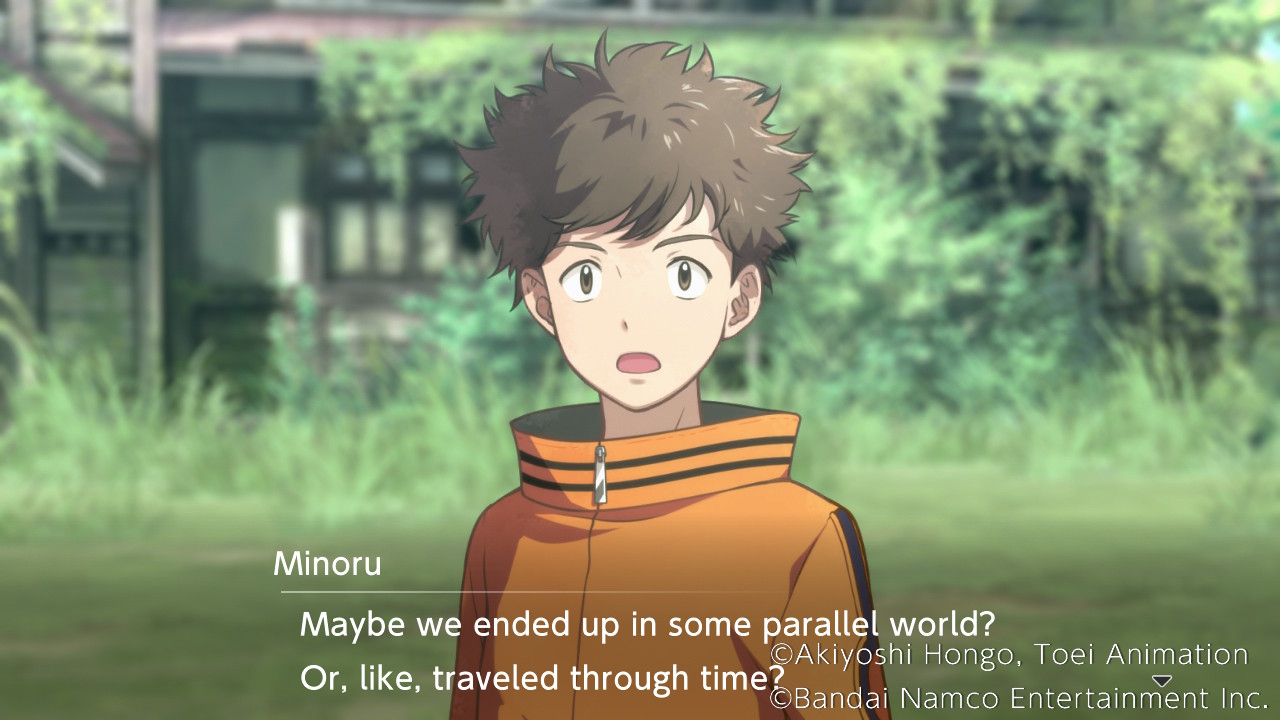
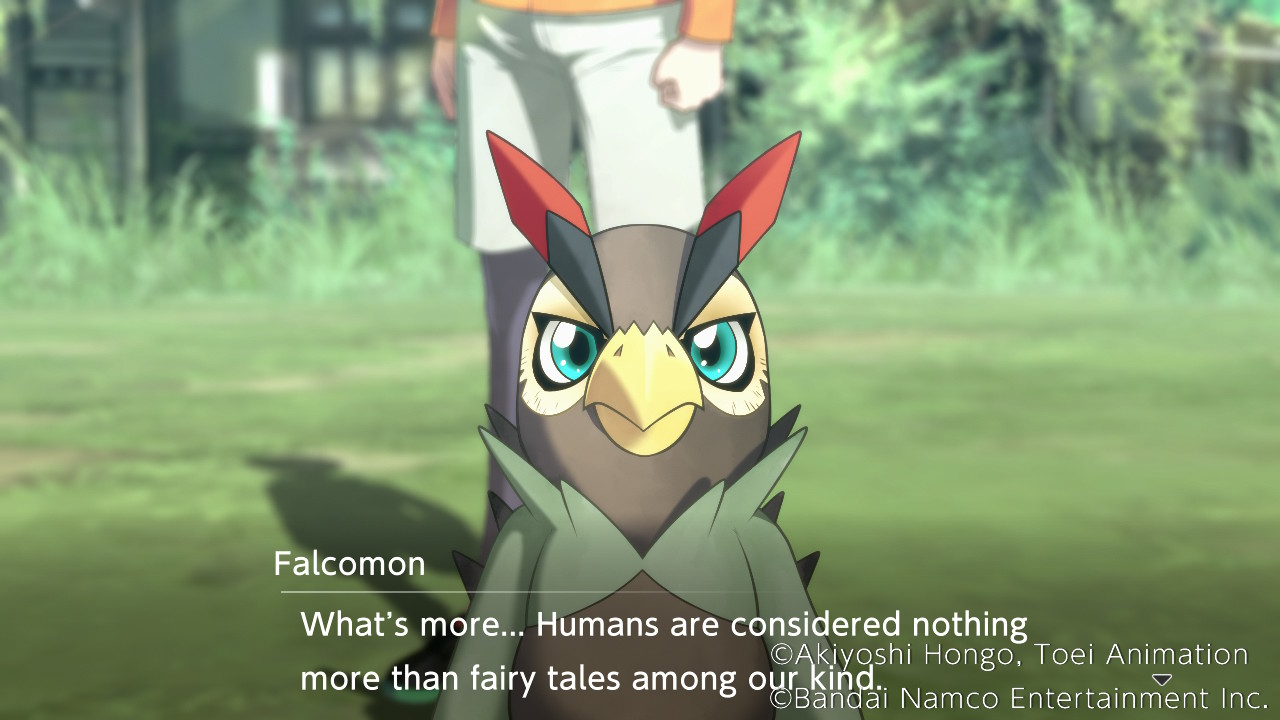
Tominaga Ryo is another character with no real Adventure counterpart, and a problem common to many a mascot character’s friend, if few digimon preceding Survive, none of whom are partners: Kunemon can not talk. Satoshi and Pikachu (to name a famous example) may overcome this issue and learn to understand each other: Kunemon and Ryo (outside one route – the so-called “true end”, although with the way their death and a later one effects the story, and how the reactions to certain events remain extreme with them alive, it feels kinder, but no more truthful, than the others) never do, leaving him adrift in another world without the desperately needed emotional support a digimon partner can survive. And for this they both pay the ultimate price.
The oldest of the group, and youngest in his highly achieving family, complete with glasses, it is impossible to miss the similarities between Kayama Shuuji and Kidou Jou. Unfortunately, Shuuji not only struggles with bearing the burdens of leadership which he assumes by default, but never develops a good relationship with either digimon in general, or his partner in particular, and takes out his frustrations on Lopmon. We first meet Jou when he is running away from Pukamon, but the two get over the initial distance to become close friends; Shuuji does not, and he deals with the stress of his partner evolving last far worse than Takeru, and when he finally does...
Dark evolution is always unpleasant, but this might be the most disturbing scene in the entire franchise. Yet given the cruel way Shuuji had been treating Lopmon beforehand, his demise honestly feels well-deserved.
A cheerful, energetic girl whose personality brings everyone together, complete with a Floramon, it is easy to compare Kimishima Saki to Tachikawa Mimi. Yet there is something of a facade to this personality in her case, and also something of an easy adaptation to her new circumstances; facing a serious illness in the real world, one is also reminded of Saiba Rei. Compared to the issues facing the others, Saki comes across as a breath of fresh air, and in the route where things do go wrong for her, she dies a hero, and it breaks Aoi in a way which I suspect losing Mimi would not to Sora. She is 2nd youngest of the group, but dealing with illness has aged her, or maybe she just had an early growth spurt: it’s easy to forget while playing that she’s only 12 and the beforementioned characters range from 14 to 16.

Shinonome Miu is only 11 years old, and unlike with Saki everyone notices it. But despite her young age, she has caught a severe case of chuunibyou, complete with her powerup dialogue referencing the placing of curses. The syndrome is not unknown among digimon characters – Digimon Ghost Game’s Higashimitarai Kiyoshiro having a similar (if far less severe case) – and isekai series have of course inspired chuunibyou characters since the syndrome was first described. But in terms of having it in full force, while still in another world one is reminded of no one so much as Kono Subarashii Sekai ni Shukufuku wo!’s Megumin and the rest of her clan.
We meet her giving a warning about the shrine linked to the digital world to the cast, which, given her personality and outfit, is understandably ignored.
The youngest of the group, she gets the most enjoyment out of her time in the digital world, befriending many digimon at an amusement park and setting herself up as their queen. One is reminded of the explanations of why Homeostasis chose young children to begin with – note that Saki, 2nd youngest of the group, also adapts well. She feels as much a natural in the digital world as Hikari, although her relationship with her brother draws far more from Takeru, and her amusement park adventure from Mimi’s relationship with the Otamamon and Geckomon.
Perhaps the most unique aspect of Survive, however, is found neither in the distant past nor the present, but in more recent times. One might be inclined to believe that, over the course of the franchise’s long history, we have seen every possible permutation of the human/digimon bond and how it can go wrong or right, but a human partner who runs away (after losing the tutorial battle) is something genuinely new. Yet the bond with digimon, as his later life shows, is not nearly so easily broken – for all the bitterness it ultimately provokes in his partner.
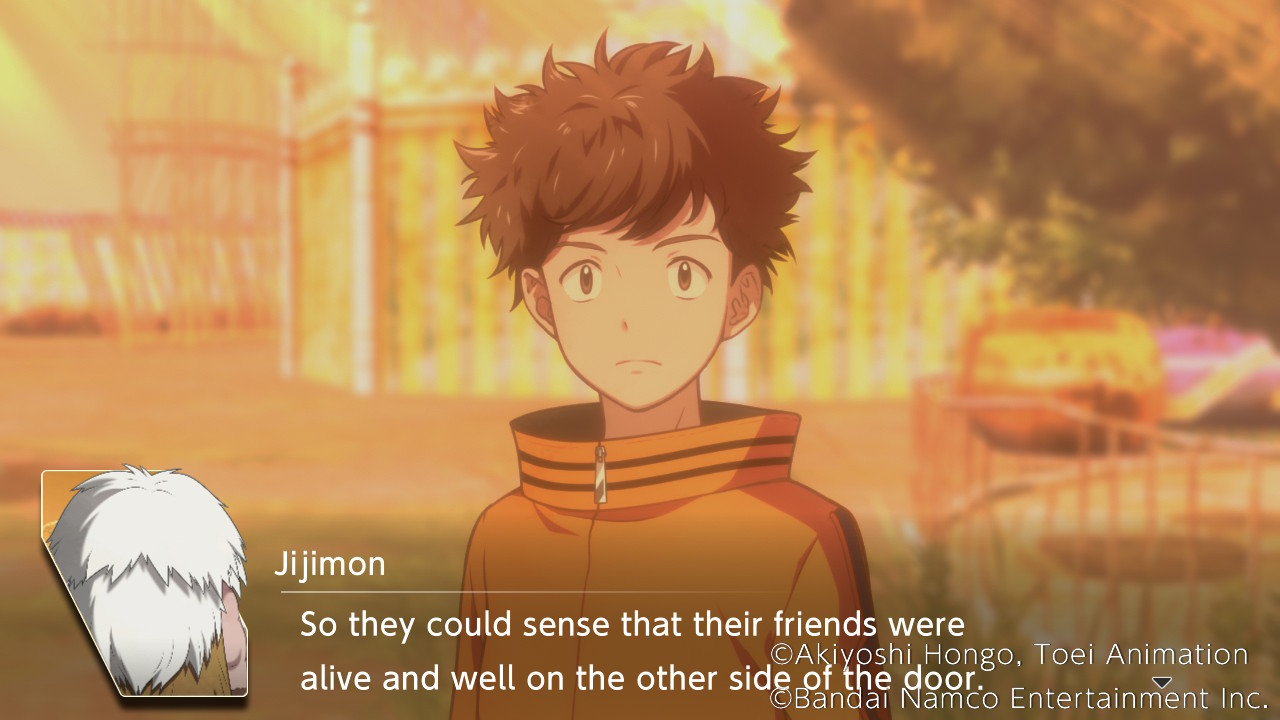
The story also plays with the time difference in a way rare in isekai; the passage of time differing between worlds is a standard trope of the genre, but it’s usually used to make time pass rapidly elsewhere on a trip to Earth – people from vastly different eras show up every now and then, but being decades older than one’s own sibling is something if anything more typical of science fiction.

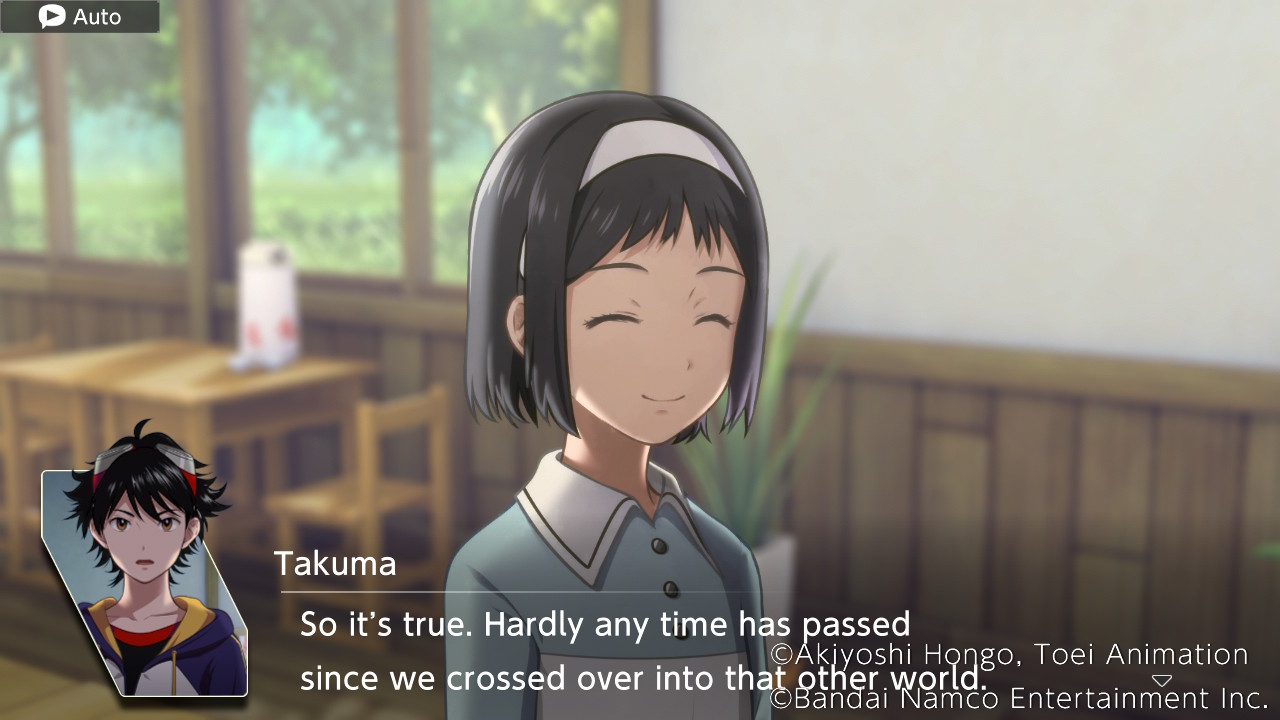
Chapter eight also gives the cast a journey there and back again, (reminiscent of episode 21 of Digimon Adventure, in a mini-arc itself inspired by episode 16 ofSeisenshi Dunbine) complete with Miyuki being caught out of her own time and experiencing 50 years of culture shock at once.
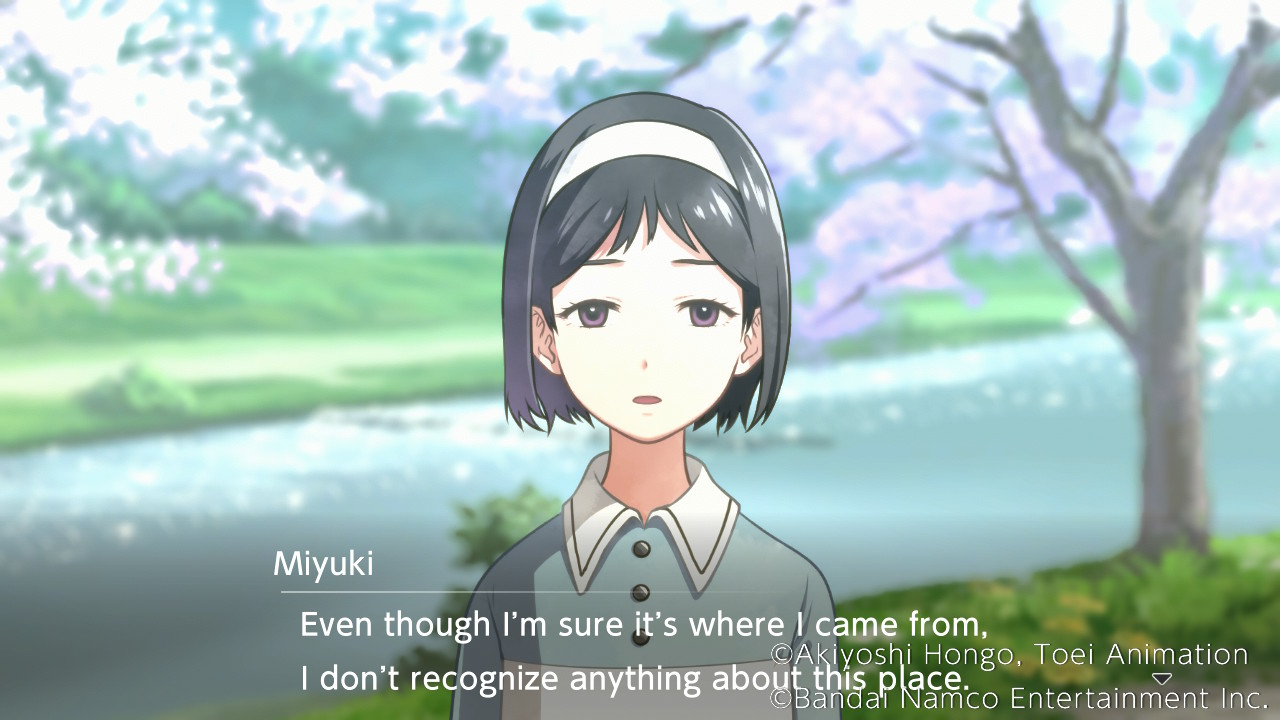
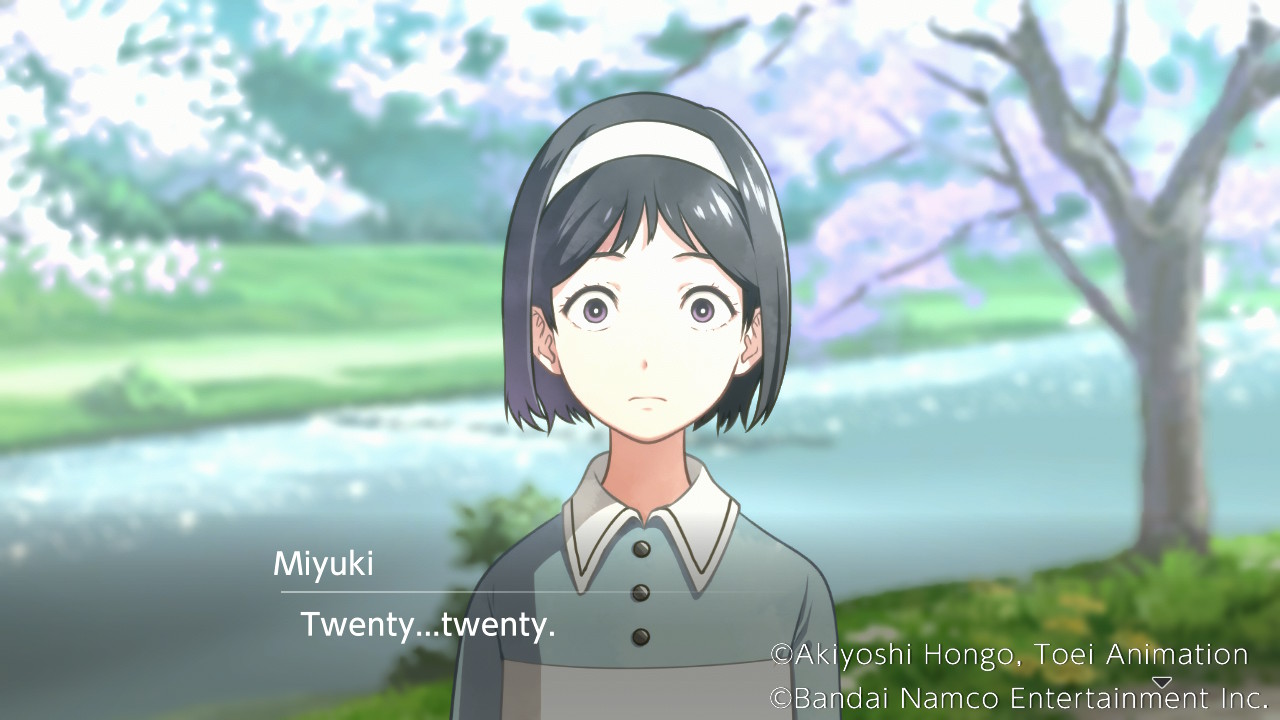
 Just like in Adventure, digimon battles on Earth receive massive public attention – but with a far more rural setting and smartphones everywhere, we instead get an Agumon vs. Piemon fight caught on video and going viral, revealing a secret Gennai sought to keep, but which could no longer realistically be kept in this modern age – leading, in one ending, to a touching callback to the Adventure movie Our War Game.
Just like in Adventure, digimon battles on Earth receive massive public attention – but with a far more rural setting and smartphones everywhere, we instead get an Agumon vs. Piemon fight caught on video and going viral, revealing a secret Gennai sought to keep, but which could no longer realistically be kept in this modern age – leading, in one ending, to a touching callback to the Adventure movie Our War Game.

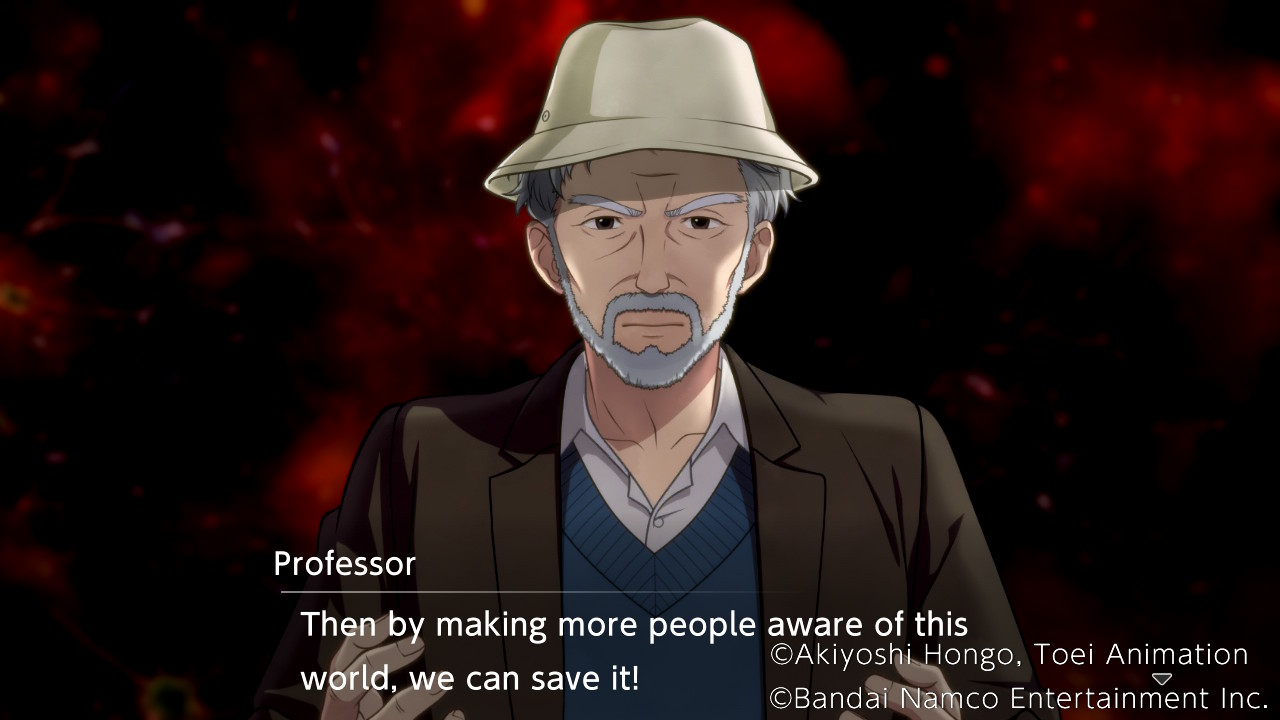 Producer Kazumasa Habu (or Habumon, as many digimon fans know him) described partner digimon in the setting as “basically the reflection of what is inside the human heart” and much of the story, for better or often for worse, revolves around that fact. This is not new to the franchise – the very mechanic of evolution through tags and crests, in Adventure, reflects the idea. And the notion of powers linked to the heart is far from rare in the genre as a whole; one is reminded of the declaration in Magic Knight Rayearth that its world, Cephiro, is a “world of the will” – with all the problems that causes Emeraude.
Producer Kazumasa Habu (or Habumon, as many digimon fans know him) described partner digimon in the setting as “basically the reflection of what is inside the human heart” and much of the story, for better or often for worse, revolves around that fact. This is not new to the franchise – the very mechanic of evolution through tags and crests, in Adventure, reflects the idea. And the notion of powers linked to the heart is far from rare in the genre as a whole; one is reminded of the declaration in Magic Knight Rayearth that its world, Cephiro, is a “world of the will” – with all the problems that causes Emeraude.
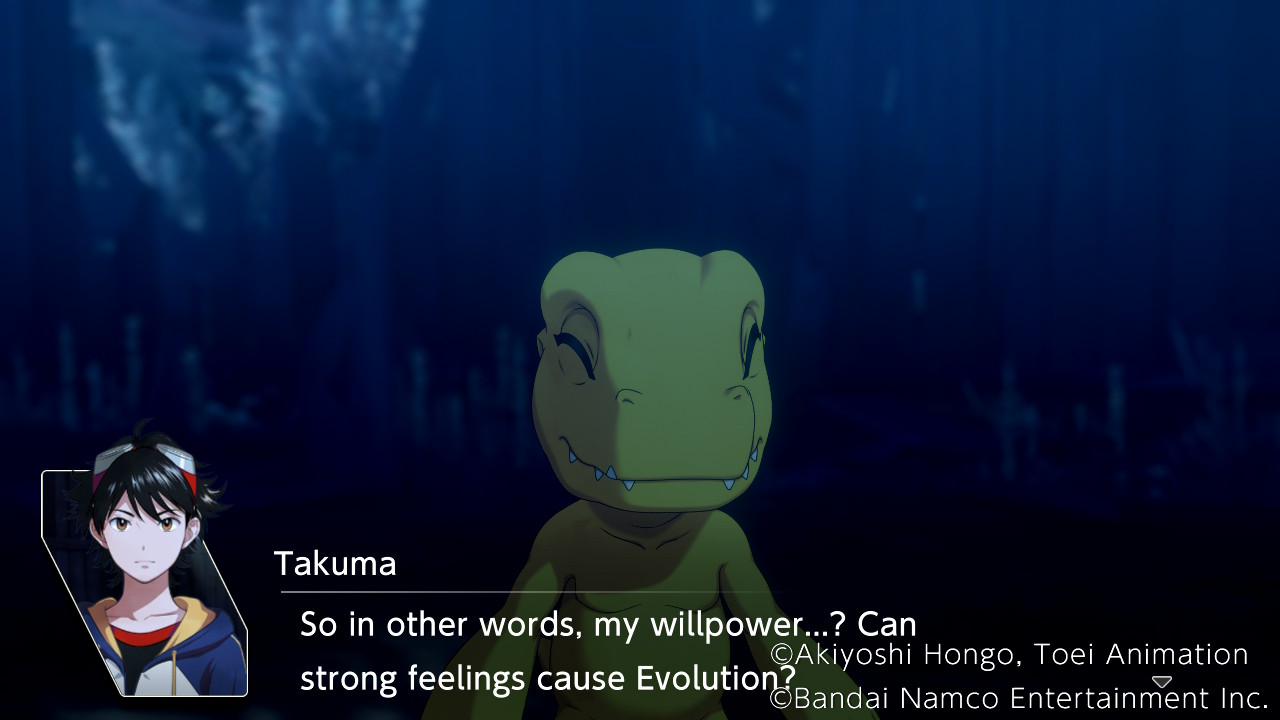
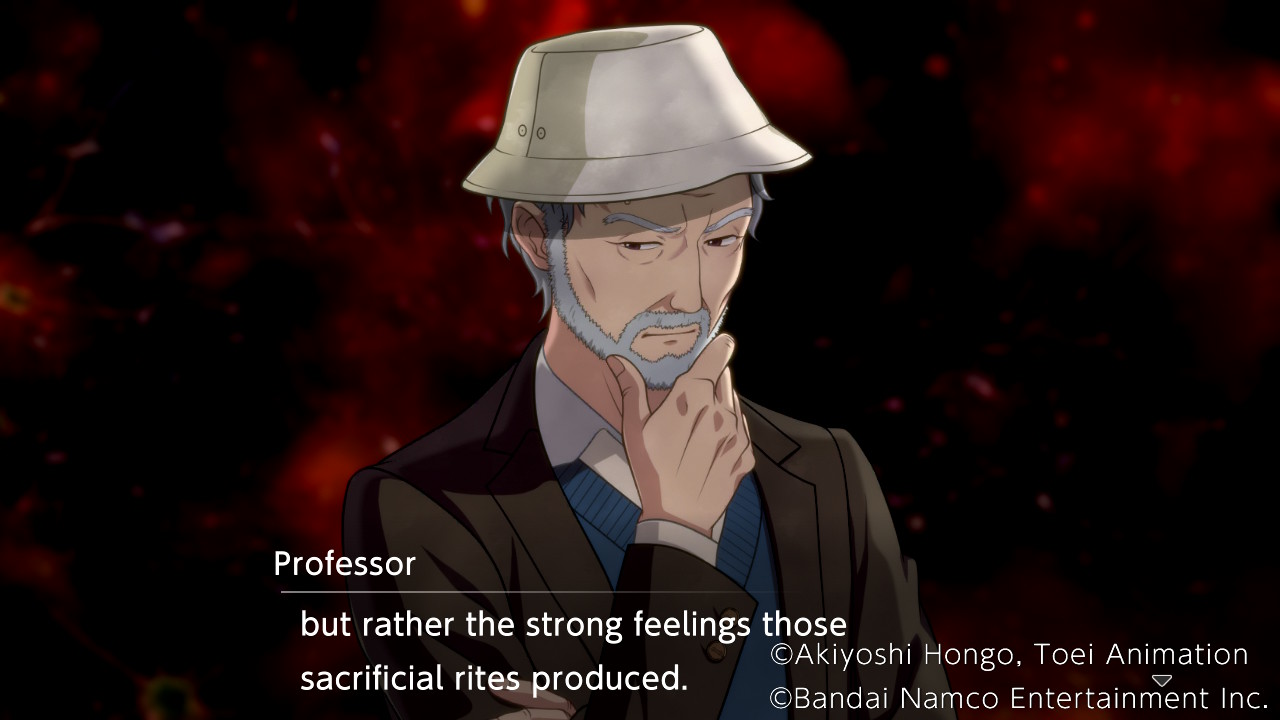
The idea of digimon dying along with their partners because of a shared soul, although never explicitly shown in Adventure, has been mentioned before by the director, Kakudou Hiroyuki; in this way and many others, Survive explores implications Adventure never did.
In others, with its dwindling gods, idea of digimon as faint forgotten presences, and digimon being warped when humans forget them, it takes a very different tack from Adventure’s optimism – although both tales conclude in similar ways, with the boundary between the worlds erased and digimon entering Earth. What to make of it is an open question, with the tension explored and resolved (or left hanging) in various, often contradictory ways by the 02 epilogue, tri., Digimon Adventure: Last Evolution Kizuna, the upcoming movie Digimon Adventure 02: The Beginning, and all five endings of Survive.
And of course, I’m still waiting for that part. I want to meet my partner.
